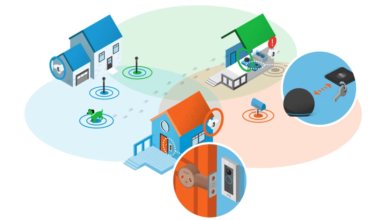See this in a URL? Don’t click!

Due to the ease with which a website can be swiftly designed in a few click without any technical experience, platforms like Wix and Squarespace are incredibly popular. Did you know Google provides a free website builder? It is not well known, but it is becoming more popular. Google Sites is the name of it. The issue is that scammers are attempting to con you by leveraging the platform to develop fake websites.
Continue reading to learn the incorrect ways that fraudsters utilise Google Sites.
Criminals using Google Sites to create spoofed websites
Google Sites allows anybody with a Google account to establish a simple website with constrained functionality, but not having the same level of popularity as Gmail or Sheets. It is a component of the Google Docs Editors suite and walks you through the creation process. It was first released in 2008.
Once it is finished, you may give your website a unique URL using the google.sites.com domain. Yet, scammers take advantage of this naming pattern to trick you into giving them your login information for banking websites, payment systems, and other services.
The scam operates similarly to other faked websites in that fraudsters make an almost exact replica of an authentic website. When looking for a particular company or service, the google.sites.com domain is simple to ignore at first sight.
You could find results with google.sites in the URL if you conduct a Google Search for a payment platform like PayPal, for instance. The link will display the official PayPal login screen when you click it.
In actuality, though, logging into your account gives criminals access to your credentials. Now that they have access to your PayPal account, they may wreck considerable financial devastation.
How to avoid spoofed websites
Every website that asks you to sign in or disclose personal information should be used with caution. There are a few ways to safeguard your funds and private data. The FBI is attempting to spread awareness since spoofing is so out of hand. The FBI has the following recommendations:
- Verify the spelling of web addresses, websites, and email addresses to identify imitations.
- Look for a padlock icon next to the URL in the address bar to verify that the website you visit has a Secure Sockets Layer (SSL) certificate.
- Don’t click links found in Google Search results. Try getting into the habit of typing the URL of the website you want to visit directly into the address bar.
- Ensure operating systems and applications are updated to the most current versions.
- Have antivirus software updated and running on all of your devices. We recommend our sponsor, TotalAV. Right now, get an annual plan with TotalAV for only $19 at ProtectWithKim.com. That’s over 85% off the regular price!
- Disable or remove unneeded software applications.
- Use two-factor authentication when possible, via biometrics, hardware tokens, or authentication apps.
-
Read More:How much is Apple Music, and how can you get it for free?











